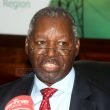On Monday, social media went awash with a controversial Zambia Daily Mail headline which, to some readers, especially non-journalists, suggested that the editor was high on weed or some equivalent psychotropic substance. Academicians, teachers, doctors, farmers, lawyers, journalists, entrepreneurs, job seekers, name it, all took turns arguing about whether or not the headline was correct.
By the close of the business yesterday, one thing came out very clear – hundreds of thousands of news consumers read the headline, but missed the message that it was delivering, and we find that to be of great concern. Behind that headline, the Zambia Daily Mail was simply trying to tell readers that the water levels in the Kariba Dam are at the lowest since 1995.
Now, in our view, that is what should attract public attention. People should seek to understand the implications of this news. What does it mean if water levels in the Kariba Dam are too damn low?
From what we have been told by our contacts at ZESCO, the ongoing 4-hour load shedding schedule is soon expected to be extended to between 6 and10 hours, depending on the location. What this means is that the energy situation in Zambia is as critical as the hunger situation; and when the energy situation hits a crisis level of the hunger situation, the economy will completely collapse. It means those in the informal sector who are struggling to make ends meet in barbershops, salons, welding joints, etc, will be wiped out!
We are not seeing the initiative from government, and the President himself in particular, to attend to this looming crisis. We are dragging the President in this because he is the chairman of the Industrial Development Corporation (IDC) board, which controls ZESCO.
We recall that President Edgar Lungu launched the US$1.2 scaling solar progarmme in May 2016, which was supposed to develop 600 mega watts of solar energy by now. Where is it? What happened to that project? We were told that partners such as the World Bank, the International Finance Corporation as well as USAID had come on board to help finance this project? Can the nation be told where this partnership is standing and when citizens will start to benefit from it?
Our suspicion is that since these institutions do not tolerate kickbacks, this project has died a natural death, which is really unfortunate. If we are wrong, let the IDC explain why they are still failing to produce even 100 mega watts of electricity from the Lusaka East Multi Facility Economic Zone which can kick in to keep the capital city powered the moment ZESCO gives up?
Our point is that when we start to see these headlines in the government controlled and State funded newspapers, we must demand answers from the President. Either his people responsible for implementing economic policies don’t follow his instructions, or the President himself doesn’t have the interest to see these solar projects come to fruition.
If water levels in the Kariba are that damn low, we don’t see how mealie meal prices will not hit K250 by January, especially if there will be no government intervention. This country is already depleted in terms of resources. We don’t have money to start importing power, so why has this solar programme died under IDC?
We have heard the Minister of Energy projecting that the remaining water in the Kariba Dam will take us up to around December, in time for the rains to replenish, but we don’t think Honourable Mathews Nkhuwa has a direct phone number to God for him to know that rains will save us by December. What if there will be a drought this year? What’s the plan? As things stand, boreholes are drying up in Southern Province and animals have already run out of green vegetation to graze from.
We cannot bank on the unpredictable rains when we have the sun 365 days a year. Instead of debating the Zambia Daily Mail editor’s comprehension of grammar, citizens must reject the message contained under that headline, warning about a looming energy crisis, because we have been promised solar energy for a long time now.
People should not be fooled, that Daily Mail headline was simply saying “we are in danger”, and if a state newspaper is telling you that, you must know that things are worse than the headline is portraying. Government is at a stage where it is now preparing citizens for the next electricity tariff adjustment. In our view, that is their only option to accommodate the importation of power.
This is why we are concerned that the solar development plan in this country has remained on paper and in speeches. We have heard all types of statements and promises about solar energy but every year, we end up with the same problem of low water levels in the Kariba Dam. Technocrats and politicians keep talking about blood volumes of money being invested in this sector, but where is the solar energy?













3 Responses
Visit the Lusaka South mult facility economic Zone. You might have a story to tell. If you drive in from the ring road ( Tokyo ) into the zone turn right at Zambia Fertilizer stand and drive past Tobacco board. I would appreciate your feedback if you takeke a tour
But where is electriity from Namalundu or Kafue Gorge and Ithezhi-tezhi? We keep talking about Kari a Dam every time, how about these two installations?
This is a good article and some good questions have been asked. We the people do need answers. its not political its just about pure survival and standard of living.